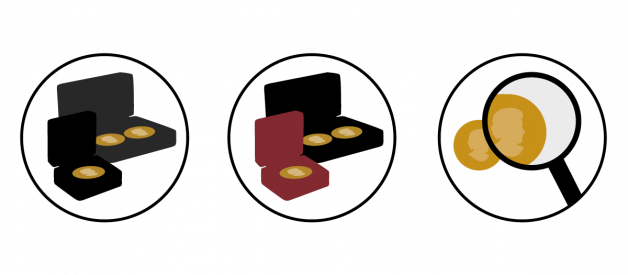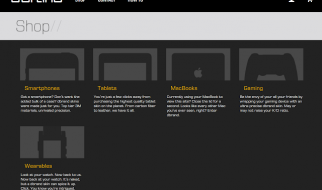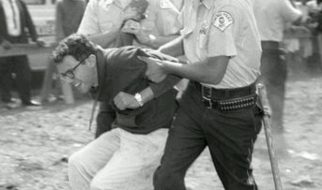
Are you thinking of starting a coin collection ? but have no idea where to begin? Then this blog is for you.
Here are a few tips and tricks to help you get started, and familiarize you with the world of coin collecting!
But first?why should you collect coins?
Collecting coins is no different from collecting a certain type of artwork, or first-edition books, or vintage stamps.
Everyone has a different reason for collecting coins. That said, there are two main reasons people do it: for personal enjoyment, and/or as an investment.
Coin collecting is fun!
There is something so satisfying about having a collection of little treasures: small, intricately designed pieces of beautiful art that you can display and look at, any time you wish.
You can also learn a lot from collecting coins. Over time, you may find yourself delving into history books, learning about politics, different cultures, iconic individuals and milestone events. Studying coins and their backgrounds can lead to a whole other passion for learning new things!
Moreover, collectors find a lot of pleasure in the ?treasure hunt.? It can require a lot of research, but it can be really exciting to eventually find that perfect coin for your collection.
Collector coins may increase in value
Not everyone collects coins as an investment. But if your collection includes higher-end coins, you may discover that many coins increase in value (based on a number of factors).
You may also want to pass coins on to children and grandchildren one day ? enabling them to further enjoy (and increase upon) the collection you?ve created!
So now that you understand the ?why? of coin collecting, here are five simple steps to help you with the ?how.?
Step #1: Get to know your ?mint lingo?
Like any specialized hobby or discipline, the world of coin collecting has its own language.
Here are a few key terms to get you on your way:
- Circulation coins: Coins that have been used in commerce and circulated among the general population.
- Commemorative coins: Coins that are minted to commemorate a particular event, person, place, institution or issue. These are usually collector coins, and not circulated. (Also known as numismatic or collectible coins.)
- Face value: The nominal value displayed on the coin (not what you paid for it).
- Intrinsic value: The actual value of the coin, based on key factors including what you paid for it, plus the historic value, aesthetic features, mint year, scarcity/rarity (mintage), and collectability.
- Mint: An industrial facility that manufactures coins (e.g., Royal Canadian Mint).
- Minting: The process of manufacturing coins.
- Mintage: The number of coins issued of a particular design.
- Numismatics: The study or collection of coins or paper money.
- Numismatist: A student or collector of coins or paper money.
- Proof coins: Coins that are minted using a high-quality finish.
- Uncirculated coins: Either a circulation coin that has never been circulated, or a coin with a brilliant field over a brilliant relief.
Coin ?anatomy? terms
The body of a coin has some specific terms as well. Here are some of the most popular:
- Obverse: The ?heads? or face/front side of a coin, which normally depicts the national emblem or the head of a prominent person.
- Reverse: The ?tails? side of a coin, usually depicting the chosen design.
- Relief: The raised or three-dimensional image found on a coin?s field.
- Field: The flat part of the coin (the background) on which the relief is struck.
- Rim: The raised portion that runs around the perimeter of a coin.
- Edge: The outer border of a coin, considered the ?third side.? May be plain or serrated.
Step #2: Just start collecting (yes, really)!
You can begin your coin collection by doing two things:
- Acquiring coins that appeal visually and emotionally to you; and/or
- Collecting coin sets.
To a collector, a coin can be precious for many reasons.
Certainly, it may be because of its intrinsic value. Or because it?s made of rich materials like pure silver, pure gold, or platinum.
But at its core, collecting coins is about creating something of significance ? to you.
So simply begin your collection by acquiring coins that pique your interest.
Invest in coin sets
You can also grow your collection with coin sets.
A coin set is a collection of uncirculated or proof coins, released by a mint.
Practically every mint worldwide produces uncirculated sets. These are in true ?mint? condition and make for a great budget-friendly ?starter set.?
Here?s a fun fact: the Royal Canadian Mint is the only mint worldwide that offers ?specimen sets.? These are coin sets of higher quality (and higher cost) than uncirculated coins, with a finish combining a brilliant, frosted raised foreground over a lined background.
Step #3: Define your collection type
Over time, you may notice similarities across your growing collection.
It may be the glimmer and gleam of gold and silver. Or it could be the design. Or maybe you?re attracted to unique coin shapes and colours.
Whatever those attributes may be, taking note of them will allow you to:
- Define more specifically what you want to collect, and
- Create coin sets based on type.
It?s not necessary to collect coins based on type, but it can certainly make collecting more fun and rewarding?especially when you find specific coins you?ve been hunting for!
Collection types for beginners
Here are just a few ideas of for ?type? collections:
- Year/date: Collect coins made in a particular year for a particular country. Or, get one coin of a specific type for every year it was minted ? for example, the Canadian silver dollar from its first year to the present day.
- Country: Collect by the country you live in, or try to get a wide variety of coins from all over the world.
- Time period: Find coins minted during a specific timeframe. Fascinated with WWI? Round up coins minted between 1914 and 1918; or collect coins that are associated with that era.
- Design: Collect by design theme, such as animals, plants, flowers, sporting and cultural events, superheroes and other pop culture phenomena. The options are limitless!
- Metal/composition: Collect coins made of certain metals like copper, silver or gold.
Be flexible!
As a general rule, always apply a flexible mindset to your coin collecting.
Why?
Your interests may change from when you first started. For example:
- Let?s say you started your collection around the theme of WWI. Over time, you may want to narrow your collection down to aviation technology used during warfare.
- Maybe you began a general collection of gold coins ? but you grow to have a particular interest in gold coins celebrating a specific milestone, like Canada?s 150th anniversary.
Step #4: Create your toolkit
Great news: you don?t need a lot of expensive equipment to start collecting coins!
However, you do need a few things to:
- Ensure they?re stored and handled properly, and
- Get the most out of the beginner?s coin collector experience.
Keep in mind: as you get more serious about coin collecting, you?ll eventually want to invest in more specialized coin-collecting supplies and tools.
However, this is a great starters? kit:
- Magnifying glass (ideally 7x magnification): To see coins? details up close;
- A notebook, index cards or software: To keep track of your growing collection;
- Storage holder: To keep your collection safe and dry;
- Cotton gloves: For handling your coins;
- A basic reference book: For general information about coin collecting.
Step #5: Take care of your coins
Caring for coins is not just a question of esthetics: your collection requires proper handling and storage to retain their value!
So here are a few tips for keeping them in ?mint? condition (so to speak).
Never handle with bare hands ? only cotton
Skin oils and dirt damage your coin?s finish and value. So never handle coins with bare hands; instead, use cotton gloves.
Moreover, avoid latex or plastic gloves, because their powder or lubricants can damage your coins.
Use caution while handling
Always pick up coins by the edges, between the thumb and forefinger. Never hold a coin by touching the obverse (front) or reverse (back) surface!
Afraid of dropping your coin when you?re handling it? Hold it over a thick, soft towel.
Meanwhile, limit how much you talk when you handle your coins. Why? Because tiny, almost invisible drops of saliva can create impossible-to-remove spots.
Store and display safely
There are a number of different ways you can store and display your coins. For beginners who collect coins of lower value, you can keep them in acid-free paper sleeves or envelopes, tubes, or folders or albums.
As you expand your collection to include more valuable coins, experts suggest investing in small, PVC-free plastic bags or ?slabs? (sealed, hard plastic cases).
You may also want to arrange an appropriate level of insurance in case of theft or fire/water damage.
From pastime to passion
Whether you are collecting coins for yourself or for a loved one, doing so can fill an entire lifetime with interest and inspiration.
Indeed, what begins as a pastime can easily become an absorbing pursuit ? even a passion!
Want more information about starting a coin collection? Click here to read the Royal Canadian Mint?s ?Beginner?s Guide to Collectible Coins.?


